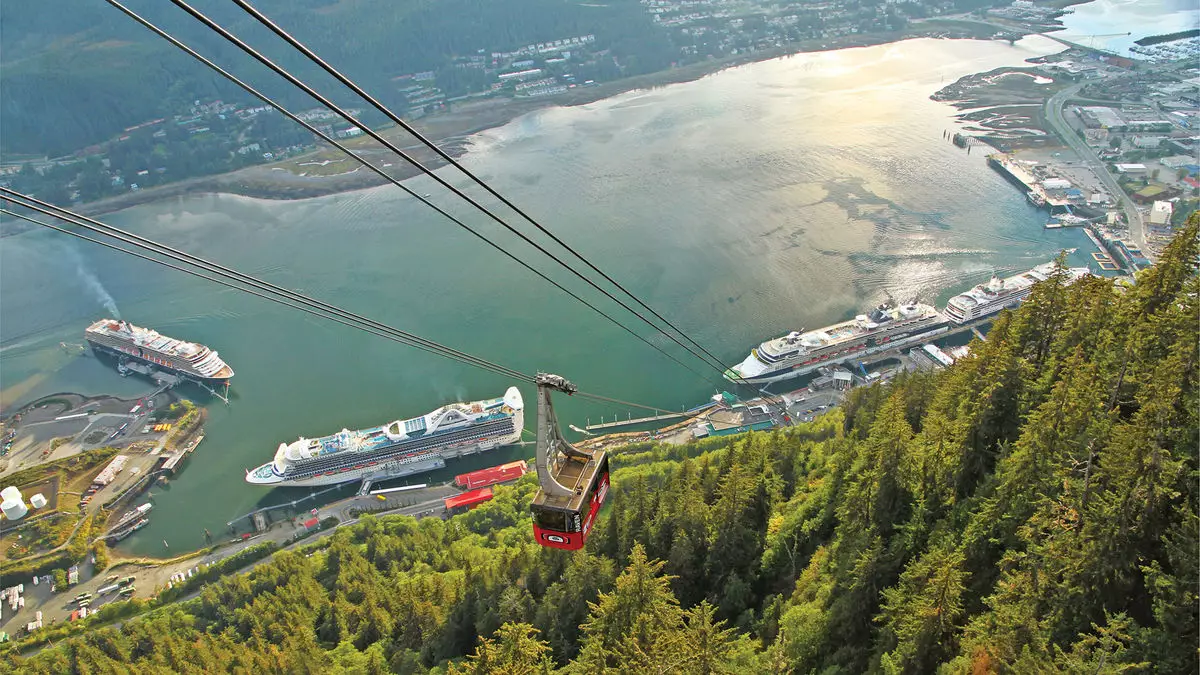The cruise tourism industry in Alaska stands at a crossroads, facing an array of challenges and opportunities. While some ports are expressing concerns over the environmental and social impacts of cruise ships, others are reacting with enthusiasm, keen to capitalize on the lucrative nature of this sector. The disparity in sentiments across different Alaskan communities highlights a complex interplay between local traditions, environmental concerns, and economic benefits.
At the forefront of this conversation is Russell Dick, CEO of Huna Totem Corp., who passionately counters the narrative that cruise ships should reduce their services due to community resistance. Dick believes that the perspective of Southeast Alaskan communities is not monolithic and that many are enthusiastic about hosting cruise ships. Over the past two decades, Huna Totem has invested considerably in developing port facilities, notably with the launch of Icy Strait Point. This port transforms a typical urban docking experience into an immersion within Alaska’s untamed wilderness, offering activities ranging from bear watching to exhilarating zip line rides.
This eagerness to embrace the tourism sector stands in stark contrast to communities that may feel overwhelmed by the influx of tourists. Dick emphasizes the importance of diversifying cruise itineraries beyond the conventional Juneau stop. His view underlines the necessity for cruise lines to recognize the myriad attractions across Alaska that can provide visitors with unforgettable experiences.
Robert Morgenstern of Carnival Corp. weighs in with a grounded understanding of the situation. Having a background as an Alaska tour guide, he appreciates the unique allure of Juneau but recognizes the need for cruise lines to adapt. With capacity limitations in high-traffic ports like Juneau, the industry faces a pressing need to explore alternative destinations that appeal to visitors seeking authentic Alaskan adventures.
Morgenstern’s perspective also creates a springboard for innovation within cruise itineraries. He anticipates that restrictions in more crowded ports could lead to diversified journeys that span a broader array of Alaskan communities, catering both to first-time visitors and those returning to explore more of the state’s spectacular landscapes.
The economic ramifications of expanding cruise tourism cannot be overlooked. Certain communities in Alaska are grappling with dwindling traditional industries, including timber and fishing, as they face increasing pressures from global market trends. Thus, the potential windfall from tourism presents a crucial lifeline for these local economies. Morgentstern iterates this notion, emphasizing how many remote communities are not just open to, but would be thrilled by, the economic boost that cruise tourism can bring.
Efforts are already underway in regional hubs like Prince Rupert, British Columbia, which is working to enhance off-ship experiences that can enrich the visitor experience. Likewise, Wrangell’s growing involvement with cruise lines, hosting various itineraries, further showcases how strategic development can transform smaller ports into attractive destinations.
Julie Saupe, CEO of Visit Anchorage, articulates another crucial aspect of the future of cruise tourism: community engagement. While Anchorage and the surrounding areas have the capacity to accommodate substantial passenger volumes without compromising local quality of life, there’s a compelling need to ensure that the voices of residents are heard in discussions about tourism growth. The potential for more cross-gulf itineraries could open up opportunities while also necessitating communities to manage the increase in visitor numbers responsibly.
Working toward a tourism model that respects local sentiments and ecological considerations will ultimately be key to fostering sustainable economic benefits. By ensuring that local stakeholders are included in the planning processes, communities can help shape their destinies rather than merely respond to the whims of the industry.
The future of cruise tourism in Alaska holds immense potential, yet it requires careful navigation through the complexities of local sentiment, economic necessity, and sustainable practices. As the industry looks to explore new horizons, collaboration with the very communities that enrich this experience will be fundamental to achieving a harmonious balance between growth and responsibility. This equilibrium will enable Alaska to showcase its breathtaking landscapes while also preserving its unique cultural heritage for generations to come.


Leave a Reply